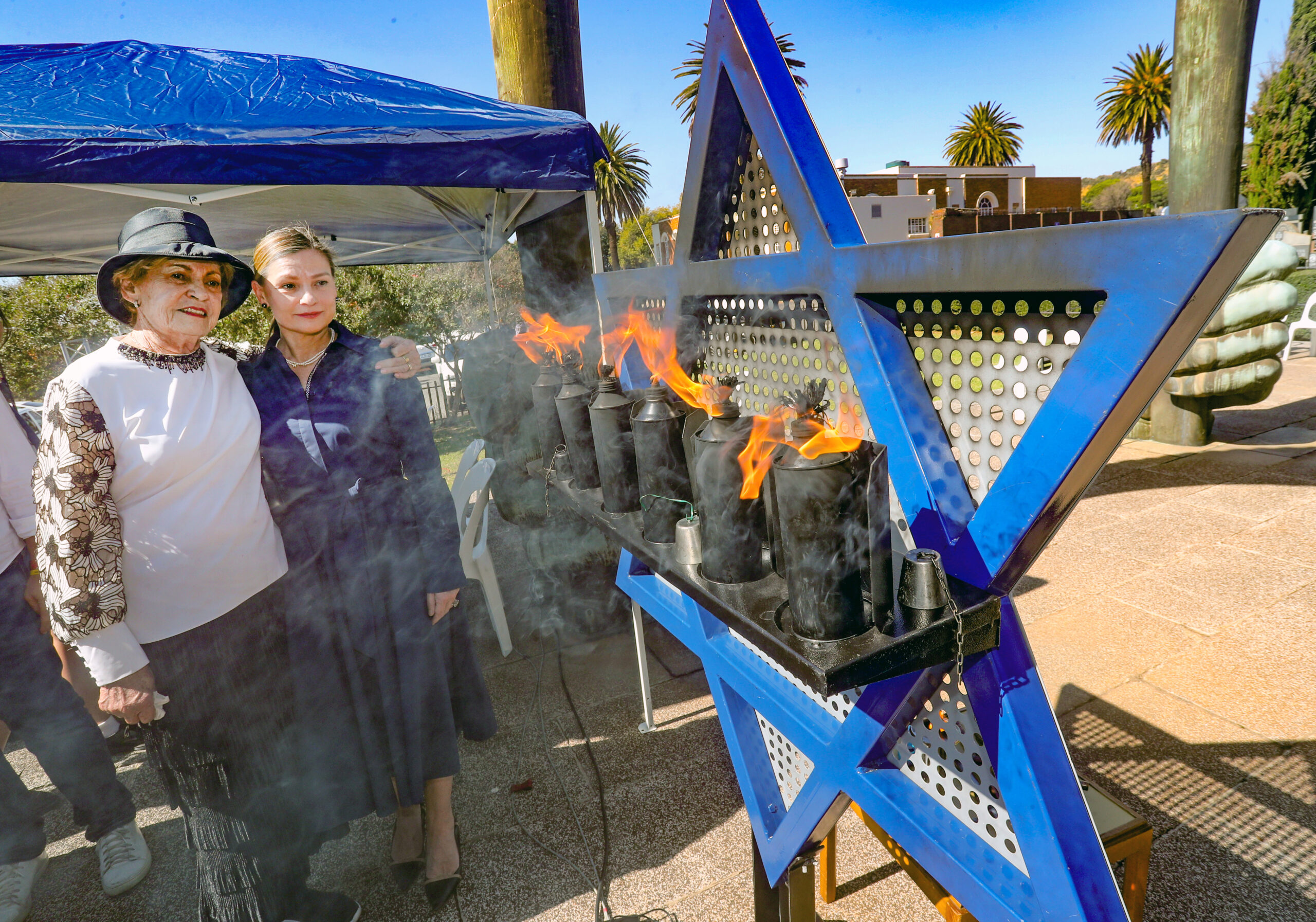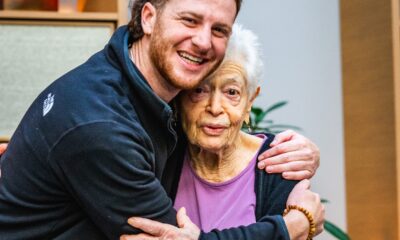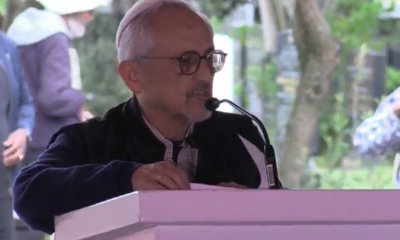
Holocaust

Babes at war – Johannesburg pupils hear stories of survival
Miriam Lazarus is one of the few remaining Lithuanian Holocaust survivors in South Africa, but she wouldn’t have been born if the Nazis had their way.
She told the Johannesburg Yom Hashoah memorial service at West Park Cemetery on Monday, 6 May, how her mother was six months pregnant with her when she was forced into the Kovno (now Kaunus) ghetto.
There, pregnant women were forced to terminate their pregnancies, but Lazarus’s mom wore many layers of clothes to hide her pregnancy, and would put her then four-year-old sister, Henya, on her lap to cover her growing belly.
When Nazi soldiers found out that she had been born, they told her father, “We’re supposed to be killing Jews not breeding Jews.” However, she was saved because she was blonde with blue eyes.
She was kept in a room in the ghetto for the first two years of her life, and no-one knew of her existence. Her father then found a couple who had recently lost a son, and they said they would take the little blonde girl on the condition that her father promised that he would never come looking for her.
Lazarus told how at just two years old, she was put into a potato sack in a lorry and dropped off to be collected by her new parents.
Her father and mother were separated, and her mother and sister taken to the Dachau and Auschwitz concentration camps. Lazarus later found out that her mother had gently held and sung to her sister and a young boy to calm them just before they perished in a gas chamber.
Lazarus’s father, she said, was sent on a death march, miraculously survived, and was found by American soldiers. The only thought going through his mind at the time, she said, was to get back to the ghetto to get information about his daughter’s whereabouts.
Lazarus grew up with a gentile family in Lithuania and one day, a “thin, thin man was standing at our front door and he took one look at me and fainted”, said Lazarus. After a week-long dispute with the family, who wanted to keep the young girl, Lazarus’s father convinced them to let his daughter go. Later, when they were on a train to Vilna, now Vilnius, the “thin, thin” man told her he was her real father, and so she once again became Miriam Lazarus, leaving behind her gentile personae.
Lazarus spoke of how she believed that although they had perished, the lives of her mother and sister still had value, as did that of her “strong-willed father” and her own three sons, three daughters-in-law, and 10 grandchildren.
“My father taught me to be honest, to be a good Jewess, and a good human being,” she told the gathering, pointing out that “Each survivor’s tale is a testimony of how their spirit managed to survive.”
The memorial also featured a pre-recorded interview by South African Jewish Board of Deputies National Director Wendy Kahn with Polish Holocaust survivor Rena Quint in Israel.
Quint had been no older than five when she and her family of five were interned in the first ghetto in Petrokov, Poland.
Her father was taken to a labour camp to make glass near Petrograd, and the rest of the family stayed in the ghetto. One night, Quint said, her family as well as the 2 000 others in the ghetto were herded into cattle cars to be deported. Quint ran away to escape the fate of her brothers and mother, who perished in the Treblinka concentration camp, and managed to reach her father.
Her father disguised her as a boy, and told the Germans she was 10 years old because 10-year-old boys were considered old enough to be used as slave labour.
In 1944, they were once again rounded up, and she was sent to Bergen-Belsen with one of the infamous death marches. On separation between men and women at the camp, her father asked a teacher to keep an eye on her. That woman became her new “mother”. When she was murdered, another woman took her place. Over the next few years, she had several different “mothers”. She never saw her father again.
On 15 April 1945, she was liberated by the British. Ill with typhus, she was sent with a group of 6 000 women and children to Sweden. There, she was adopted, and with her new family, she left for America and moved to Israel in 1984 with her husband and children.
Adi Cohen Hazanov, Israel’s deputy ambassador to South Africa, told the gathering the story of Holocaust survivor Moshe Ridler, who was murdered by Hamas terrorists in his home on Kibbutz Holit on 7 October 2023.
Ridler, she said, grew up in Romania and was nine years old when the war started. His father and older sister were sent to a labour camp and two years later, when he was 11 years old, his mother and sister died of typhus. He was able to escape to a nearby Ukrainian village, and hid there until the end of the war.
“Moshe lived for 91 years, during which he made aliya and took part in the establishment of the state of Israel, built a family, and lived his life peacefully. He overcame an attempt to kill him once just for being Jewish, and then eventually was murdered for the same reason,” said Cohen Hazanov.
“The Holocaust is still the greatest genocide in history. It was the crime of all crimes, with the intention of exterminating the Jewish people. The Holocaust stands alone in the scope of horror and destruction. Out of respect for the six million Jewish victims, we must avoid comparison to any other conflict. If every war is considered a genocide, the term becomes meaningless.” she said.
More than 927 school pupils attended the West Park event, including many from the Deutsche Internationale Schule Johannesburg, Crawford, Brandcliff House, and Randpark High School.
For many of them, it was their first opportunity to hear first-hand survivor testimony, and be exposed to Jewish commemoration of the Shoah.
“A special moment occurred following the ceremony, when a group of pupils from the Deutsche Internationale Schule came on the platform to learn more about the Holocaust monument and the service”, said Kahn. “I could engage with them, explain aspects of the programme, and answer questions. They expressed gratitude at being included in the commemoration,” she said.










